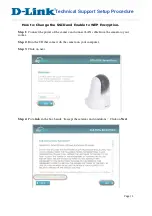
AXIS XPQ1785 Explosion-Protected Camera
Learn more
Learn more
Capture modes
What capture mode to choose depends on the requirements for the frame rate and resolution of the specific surveillance setup. For
specifications about available capture modes, see the product’s datasheet at
Overlays
Overlays are superimposed over the video stream. They are used to provide extra information during recordings, such as a timestamp,
or during product installation and configuration. You can add either text or an image.
Pan, tilt, and zoom (PTZ)
Guard tours
A guard tour displays the video stream from different preset positions either in a predetermined or random order, and for configurable
periods of time. Once started, a guard tour continues to run until stopped, even when there are no clients (web browsers) viewing the
images.
Streaming and storage
Video compression formats
Decide which compression method to use based on your viewing requirements, and on the properties of your network. The
available options are:
Motion JPEG
Motion JPEG, or MJPEG, is a digital video sequence that is made up of a series of individual JPEG images. These images are then
displayed and updated at a rate sufficient to create a stream that shows constantly updated motion. For the viewer to perceive motion
video the rate must be at least 16 image frames per second. Full motion video is perceived at 30 (NTSC) or 25 (PAL) frames per second.
The Motion JPEG stream uses considerable amounts of bandwidth, but provides excellent image quality and access to every image
contained in the stream.
H.264 or MPEG-4 Part 10/AVC
Note
H.264 is a licensed technology. The Axis product includes one H.264 viewing client license. To install additional unlicensed
copies of the client is prohibited. To purchase additional licenses, contact your Axis reseller.
H.264 can, without compromising image quality, reduce the size of a digital video file by more than 80% compared to the Motion
JPEG format and by as much as 50% compared to older MPEG formats. This means that less network bandwidth and storage space
are required for a video file. Or seen another way, higher video quality can be achieved for a given bitrate.
How do Image, Stream, and Stream profile settings relate to each other?
The
Image
tab contains camera settings that affect all video streams from the product. If you change something in this tab, it
immediately affects all video streams and recordings.
The
Stream
tab contains settings for video streams. You get these settings if you request a video stream from the product and don’t
specify for example resolution, or frame rate. When you change the settings in the
Stream
tab, it doesn’t affect ongoing streams, but
it will take effect when you start a new stream.
13






































